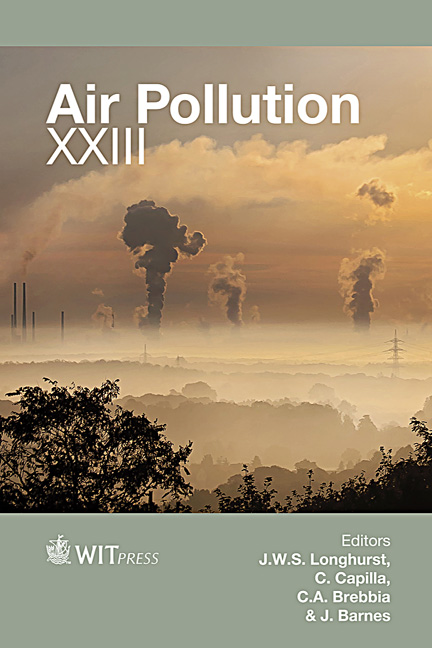Assessment Of Air Pollution Concentrations From Brick Kilns Using An Atmospheric Dispersion Model
Price
Free (open access)
Transaction
Volume
198
Pages
11
Page Range
27 - 37
Published
2015
Size
1,193 kb
Paper DOI
10.2495/AIR150031
Copyright
WIT Press
Author(s)
T. Kanabkaew, K. Buasing
Abstract
Brick manufacturing is traditionally a small-scale and improperly managed industry. Air pollutants, i.e. particulate matters (PM), carbon monoxide (CO) and sulfur dioxide (SO2) were mainly emitted during the brick firing process. The area of Bang Pu, Nakhon Si Thammarat in southern Thailand was observed to have high numbers of the operating kilns. With substantial low height and conventionally unorganized industry, the nearby communities would be exposed to the adverse environmental and health impacts from local air pollutions. This paper was designed to develop a database of air pollutant emissions and to assess pollutant dispersion of PM10, CO and SO2 from brick kilns in Bang Pu, Nakhon Si Thammarat. Air pollution emission was estimated mainly using IPCC and USEPA guidelines. An AERMOD modeling system was used to simulate pollution dispersions. Results showed that emissions for each brick kiln including PM10, CO and SO2 were ranged between 0.0346–0.0751, 1.3022–3.3603 and 0.1736–0.4481 g/s, respectively. For pollutant dispersions, simulated concentrations for a maximum 1-hour, 24-hour and annual averages were as follows: PM10 (13, 1 and 0.2 μg/m3, respectively); CO (487, 35 and 6 μg/m3, respectively); and SO2 (64, 5 and 1 μg/m3, respectively). The overall assessment showed that the concentrations of pollutants (PM10, CO and SO2) met the National Ambient Air Quality Standards of Thailand. However, for long term health impact reduction, the appropriate prevention and mitigation measures should be implemented to control the concentrations of air pollutants from brick kilns in the area.
Keywords
air pollution, brick kilns, emission inventory, AERMOD





